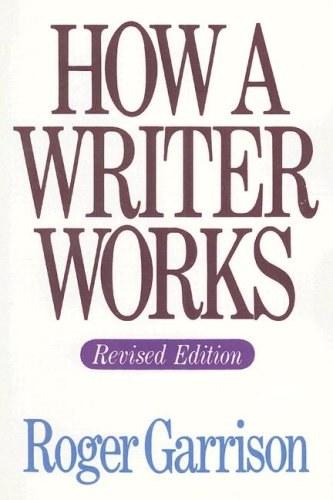Customizing a Suit: How Much Does it Cost?
Customizing a suit can be an expensive endeavor, but the cost varies greatly depending on factors such as the fabric, style, and complexity of the design. Generally, a basic tailored suit with standard features can cost anywhere from $500 to $1000. However, for a more elaborate and unique design, prices can rise up to $5000 or more. It is important to note that custom suits require a significant amount of time and effort, with some designers taking several weeks or even months to create a finished product. Additionally, alterations may also be required after the initial fitting, which can add additional costs. When considering custom suit customization, it is essential to work with a reputable and experienced tailor who can provide an accurate estimate of costs and ensure the best possible outcome. Ultimately, while the upfront cost of a custom suit may seem high, the investment can pay off in both quality and style.
As one of the most important and versatile pieces in a man's wardrobe, a suit can make or break an outfit. Whether you're attending a formal event, a business meeting, or just running errands around town, a well-tailored suit can make you look and feel confident and polished. But with so many factors affecting the cost of a custom-made suit, from the fabric to the fit to the details, how much should you expect to spend? In this article, we'll explore the various components of a custom suit and provide some guidance on how to create your own personalized suit that fits your budget.
The Fabric Choices

The first step in creating a custom suit is selecting the right fabric. The quality and texture of the fabric will have a significant impact on the overall look and feel of your suit, as well as its durability and care requirements. Some of the most popular fabrics for custom suits include wool, cotton, linen, and synthetic blends. Here's a breakdown of each option:
1、Wool: Wool is a timeless classic that offers excellent warmth, softness, and durability. It comes in a wide range of textures and weights, from lightest cashmere to heaviest melton. Wool suits are typically more expensive than other fabrics, but they hold up well over time and can be tailored to fit any body type.
2、Cotton: Cotton is another popular choice for custom suits due to its comfort, breathability, and low maintenance. Cotton suits are available in both lightweight and heavy weight fabrics, making them suitable for a variety of occasions. However, cotton may not hold up as well in humid or cold weather conditions as wool.
3、Linen: Linen is a natural fabric that offers a fresh, airy feel and is perfect for warm weather events or casual wear. Linen suits are lightweight and breathable, but they can wrinkle easily and may require more frequent pressing. Linen is also more prone to color fading than other fabrics.
4、Synthetic Blends: Synthetic blends offer the best of both worlds by combining elements of natural and synthetic fabrics. These blends can be tailored to achieve the desired level of warmth, softness, and durability without sacrificing breathability or wrinkle resistance. Synthetic blends are often more affordable than pure wool or linen suits and may be a good choice for those looking for a balance between style and function.
The Style and Fit
Once you've selected your fabric, the next step is deciding on the style and fit of your custom suit. There are several styles to choose from, including single-breasted, double-breasted, slim-fit, and loose-fitting. Each style has its pros and cons, and it's important to choose the one that best suits your body type and personal preference. For example, a single-breasted suit is classic and versatile, while a double-breasted suit adds visual interest and sophistication. A slim-fit suit is ideal for those who want a sleek, modern look, while a loose-fitting suit provides more comfort and flexibility.
The fit is equally crucial when it comes to custom suits. A well-fitted suit will flatter your body shape and enhance your overall appearance. To ensure a perfect fit, you'll need to measure your chest, waist, shoulders, hips, and inseam at least two weeks before your fitting date. Your tailor will use these measurements to create a pattern based on your body type and preferences. Once the pattern has been created, it will be cut into individual pieces that can be assembled into your final suit.

The Details
In addition to the fabric, style, and fit, there are several details that can elevate the overall look and feel of your custom suit. These include the lapels, buttons, pockets, and linings. Each detail can make a significant impact on the final appearance of your suit, so it's important to communicate your preferences clearly to your tailor. For example:
1、Lapels: Lapels come in various shapes and sizes, from pointed to rounded to oblong. You can choose the lapel style that best complements your suit's overall design and matches your personal taste.
2、Buttons: Buttons come in various designs and materials, including metal, plastic, silk, and mother-of-pearl. You can choose buttons with unique patterns or colors that match your suit's overall theme or complement your shirt and tie combination.
3、Pockets: Pockets come in various shapes and sizes, including single pleats, double pleats, patch pockets, and slash pockets. You can choose pockets that match your suit's overall design and provide practical functionality for carrying items such as wallets or cell phones.
4、Lining: Lining is an optional feature that can add warmth and comfort to your suit while keeping it looking sharp. Lining can be made from either silk or satin, depending on your personal preference.
Cost Considerations
Now that you understand the various components of a custom suit and how they affect the overall appearance and function of your suit, you may be wondering how much you can expect to spend on your own custom suit. The answer varies depending on several factors, including:

1、Fabric Choice: As mentioned earlier, the cost of different fabrics can vary significantly depending on their quality and availability. Higher-quality fabrics such as wool or fine linen may cost more than lower-quality options such as cotton or synthetic blends. Additionally, certain fabrics may be more expensive due to their unique properties or limited availability in certain regions.
2、Style and Fit: The style and fit of your suit will also affect its cost. For example, adding intricate details such as studs or frills may increase the complexity of the construction process and drive up costs accordingly. Similarly, choosing a more fitted or tailored style may require additional alterations or adjustments to achieve the perfect fit.
3、Tailor Experience: The expertise of your tailor can also play a role in determining the cost of your custom suit. A skilled tailor who specializes in custom suits may charge higher rates than a general tailor or seamstress who does not have specialized training or experience working with custom garments.
4、Timeline: Finally, the timeline for creating your custom suit will also affect its cost. If you need the suit sooner rather than later (e.g. for a wedding or job interview), you may need to pay a premium for expedited service or rush shipping fees. On the other hand, if you have plenty of time to wait for your custom suit to be made, you may be able to negotiate better pricing terms with your tailor or shop owner.
Conclusion
When it comes to creating a custom suit that fits within your budget, there are several factors to consider beyond simply choosing the right material or style. By understanding the various components of a custom suit (such as fabric choices, style and fit, details) and how they interact with each other, you can make informed decisions about what you want in a suit that will help you look your best while staying within your budget constraints. So why not take the time to explore all your options today? With so many factors at play when it comes to custom suits, there's no reason not to find the perfect fit that meets all your needs!
Articles related to the knowledge points of this article:
The semi-long down jacket: a winter essential for men and women
The Mid-Long Length of Winter Coats
Title: The Art of Police Tie Clips: A Cultural Symbol of Law Enforcement
The charm of loose-fitting jackets
Feather-filled Vest for Women: A Fashionable and Functional Wardrobe Staple
Feathered jackets: a wardrobe essential for the cold weather



